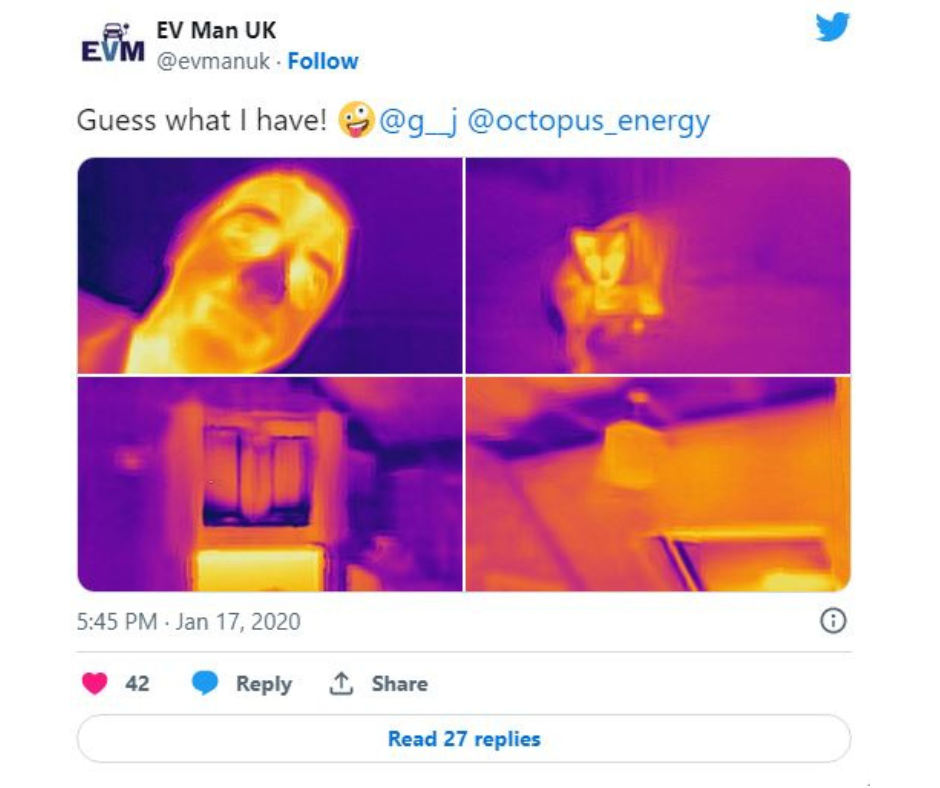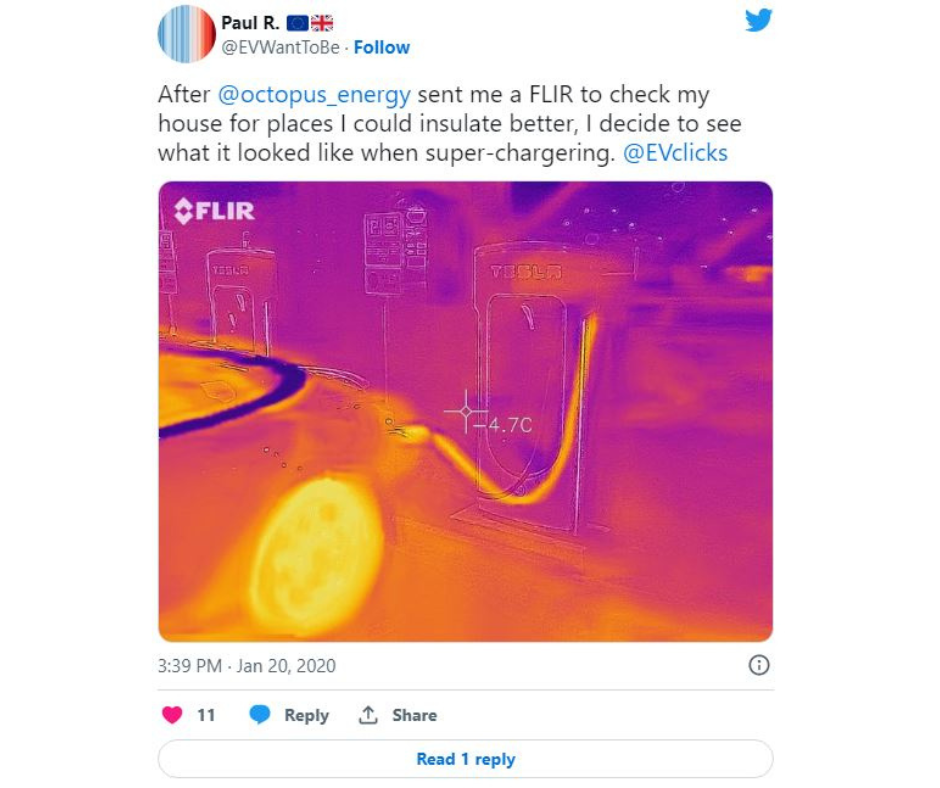
It is no secret that the cost-of-living crisis, rising global temperatures, and approaching climate targets have created more pressure than ever to reduce our energy consumption. For over a year, we have published multiple reports on councils, charities, and utility companies harnessing thermal imaging to identify sources of heat loss around homes, in a bid to reduce both energy bills and carbon emissions. We are very pleased and proud to reveal that we have played a significant role in one of these stories: that of Octopus Energy lending Teledyne FLIR Thermal Cameras to its customers as part of its Octo Assist customer support initiative. As Teledyne FLIR’s number one UK supplier, we initially provided three-hundred Teledyne FLIR One Pro Thermal Smartphone Attachments for Octopus Energy’s thermal camera loan program. Now, thanks to the popularity of the project, we have had the privilege of supplying a further one hundred and seventy new Teledyne FLIR One Edge Pro Thermal Smartphone Attachments. We are delighted to know that these cameras will go towards helping Octopus Energy’s customers lower their energy consumption, emissions, and expenditure.
Quick Links
- Octopus Energy’s Octo Assist Thermal Camera Initiative
- Finding Sources of Heat Loss with Octopus Energy’s Thermal Cameras
- Octopus Energy’s Tips on Improving Home Insulation
- Octopus Energy’s Octo Assist Thermal Camera Initiative Makes Headlines
- Introducing the Teledyne FLIR One Pro & One Edge Pro
- Further Information
Octopus Energy’s Octo Assist Thermal Camera Initiative
Since 2019, Octopus Energy has been lending FLIR One Pro Thermal Cameras to customers that it identifies as having a high energy usage (based on in-house data) or as struggling with debt. Over the free, five-day loan period, customers can use the thermal cameras to identify sources of heat loss within their homes, allowing them to make targeted, meaningful, low-cost improvements that will bring down their energy bills and carbon emissions.
In 2019, the chief executive of Octopus Energy, Greg Jackson, told This is Money:
“We are proud to launch this initiative and show that Octopus isn't afraid to do things differently.
People are understandably immune to bland generic messages about energy efficiency, but by finding the people with unexpectedly high bills, and offering them truly useful advice based on their own home, we hope we can really help people stay warm for less.”[1]
Octopus Energy encourages its customers to share their findings on social media. As a result, the program’s popularity has exploded. So much so that customers can now register their interest in loaning a camera rather than waiting for Octopus Energy to contact them. It is this boom in demand that Octopus Energy hopes to satiate with the additional one hundred and seventy Teledyne FLIR One Edge Pro Thermal Cameras purchased from PASS Ltd.
Click Here for the Full Details of Octopus Energy’s Thermal Camera Loan Initiative
Finding Sources of Heat Loss with Octopus Energy’s Thermal Cameras
Octopus Energy provides guidance on using Teledyne FLIR’s Thermal Cameras on its website, answering key questions such as:
“What do the colours mean?
Orange/yellow/white colours mean the area is warm – the brighter the colours, the hotter the area is.
Dark blue/purple colours mean the area is cold – the darker the blue, the colder the area is.”[2]
Octopus Energy goes on to detail what to look for when using a Teledyne FLIR One Pro or One Edge Pro outside and inside a property:
“Whilst using your camera outside your home…
You want to see the cold blue colours. This would mean your heating is being kept inside your house and you’re not wasting your energy use on heating the sky.
If you see bright yellow/white colours on your walls, roof or windows, focus on these areas when looking to improve insulation.
Whilst using your camera inside your home…
You want to see the warm yellow colours. This would mean cold air isn’t coming in and your heating isn’t escaping out.
If you see dark blue colours, focus on these areas when looking for draughts to plug and areas to better insulate.”[3]
When used in this way, Teledyne FLIR’s thermal cameras make it easy to identify sources of heat loss coming from:
- Doors
- Windows
- Unused rooms
- Loft hatches
- Extractor fans
- Chimneys
- Radiators
- Hot water tanks and pipes
Read our Game of Thrones-themed blog for more pointers on combating poor insulation using a Teledyne FLIR thermal camera.
Winter Is Coming: Prepare Your Home for the Long Night(s) Using Teledyne FLIR Thermal Cameras
Octopus Energy’s Tips on Improving Home Insulation
Committed to reducing customers’ bills through the installation of quick, inexpensive but targeted fixes, Octopus Energy suggests several costed insulation improvements alongside tutorials and how-to guides. Below are just a few examples of Octopus Energy’s advice; a complete list can be found on their website.
Doors & Windows
Draughty doors can be a source of heat loss as they allow cold air to enter the property. This means that your heating must work harder and longer to keep your home warm. A draught excluder, or even a rolled-up towel, placed at the foot of your door provides a simple method of blocking cold air. As you can see in the images below, the colours at the bottom of the door on the left, the one without a draught excluder, are darker and bluer than those at the base of the door on the right, where a rolled-up towel has been placed. The rolled-up towel traps the heat inside and stops the draught from entering, keeping the area warmer.
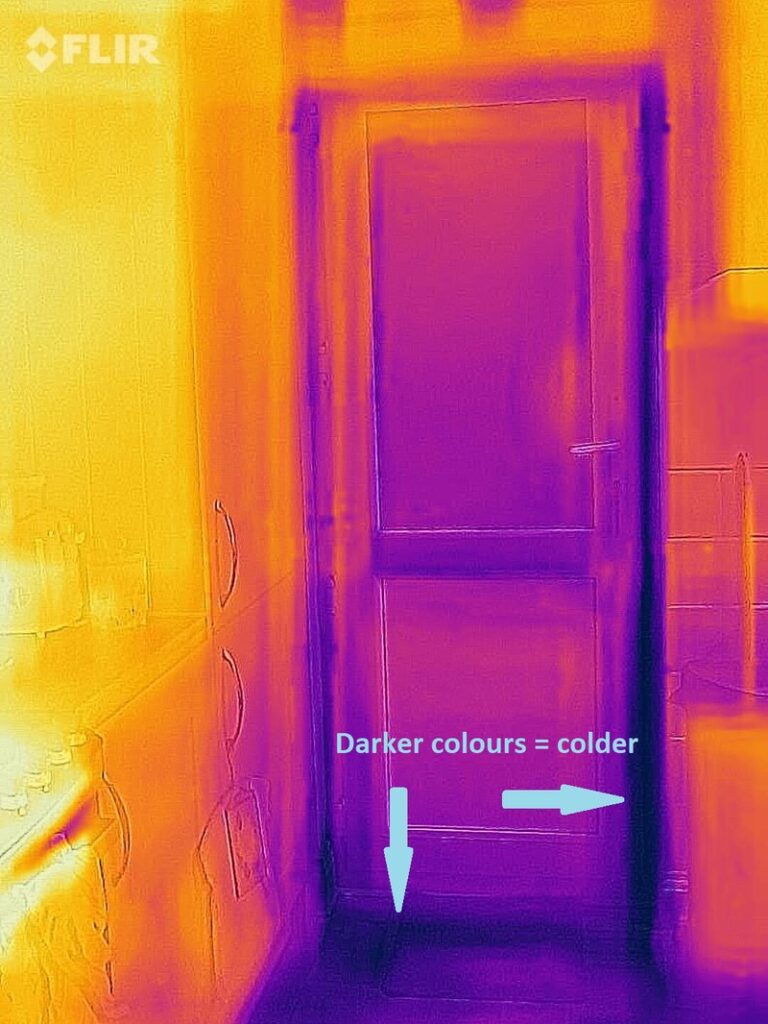
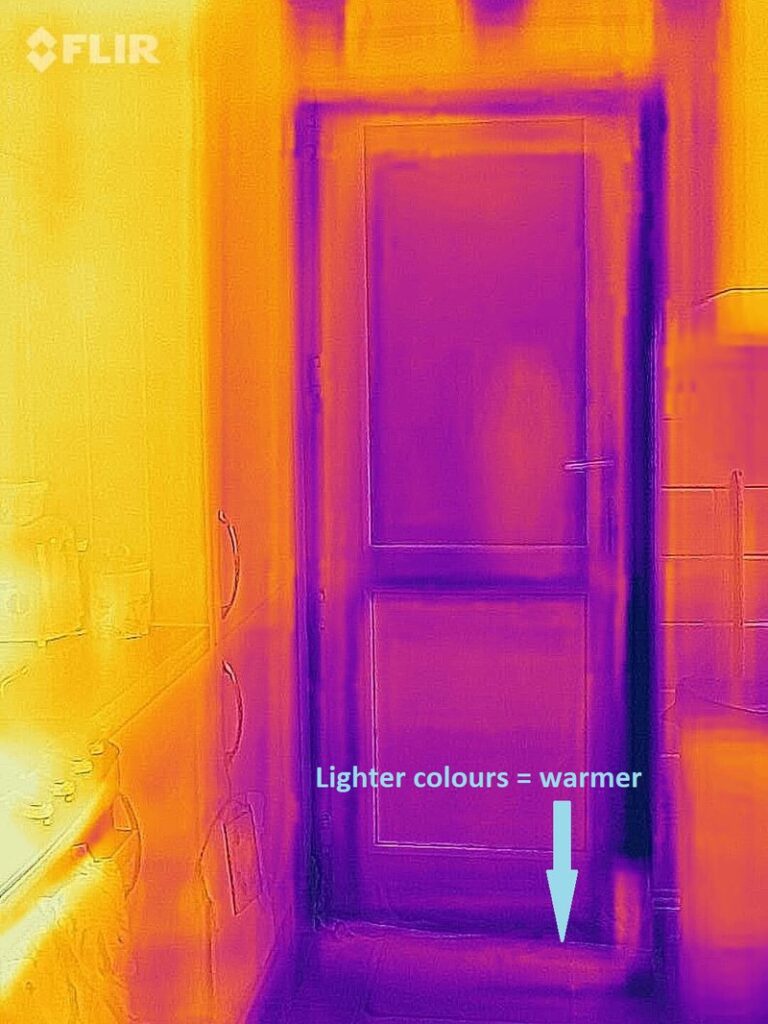
When it comes to draughts entering around the edges of doors and windows, Octopus Energy advises applying self-adhesive, metal, or plastic draught-proofing strips. Additionally, closing curtains around draughty doors and windows can also help to retain heat and repel cold air, as illustrated in the images below.
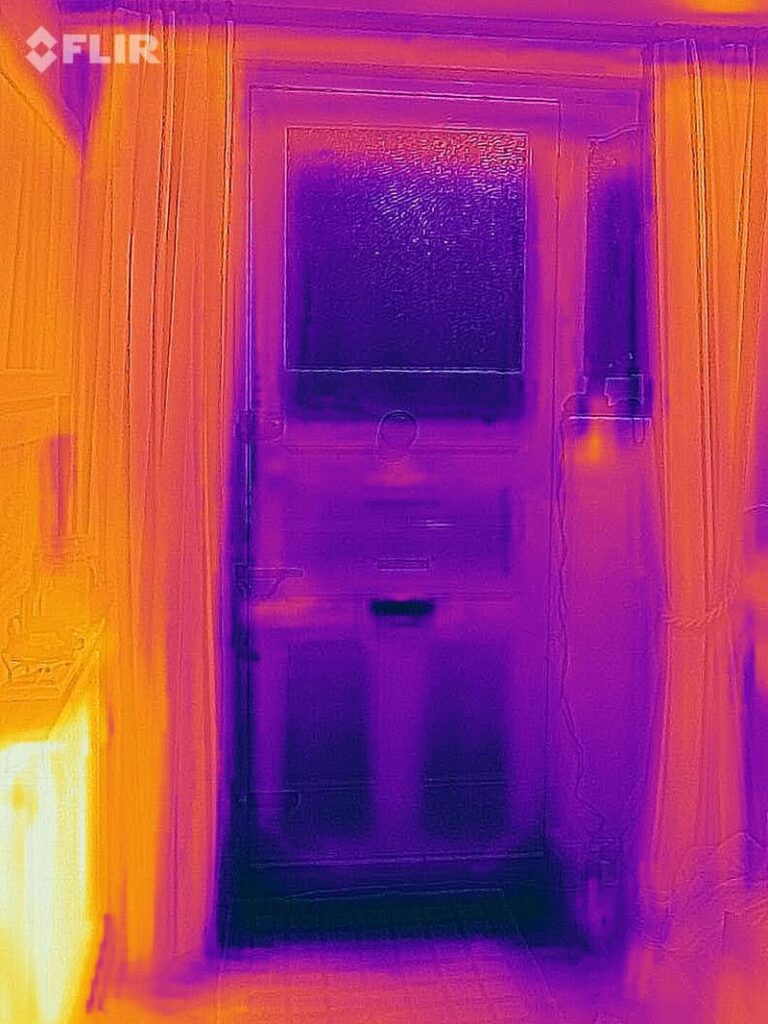
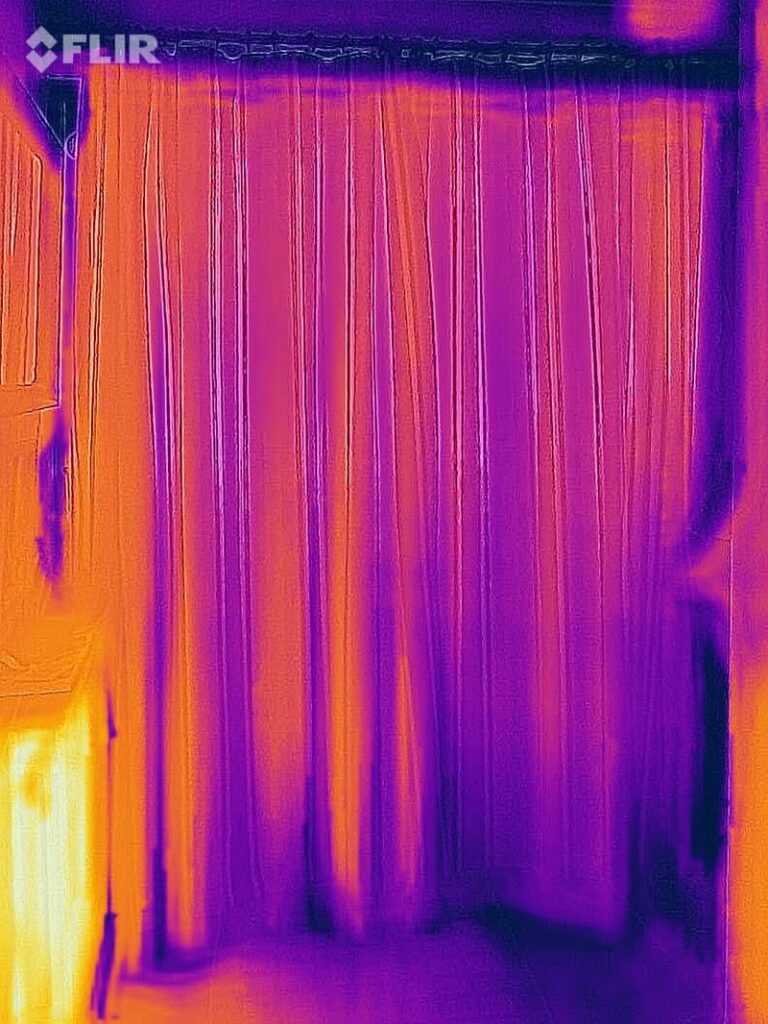
Notice that the photo on the left is covered in many dark blue areas where cold air permeates the atmosphere. The colours become significantly lighter in the image on the right as the drawn curtain is blocking the draught and trapping the warm air in the house.
Unused Rooms
Shutting the doors of unused, unheated rooms prevents warm air from flowing into cold spaces. Look at the difference in colour between the thermal images below: the one on the right is notably lighter as the warm air has been prevented from drifting into the cold unused room.
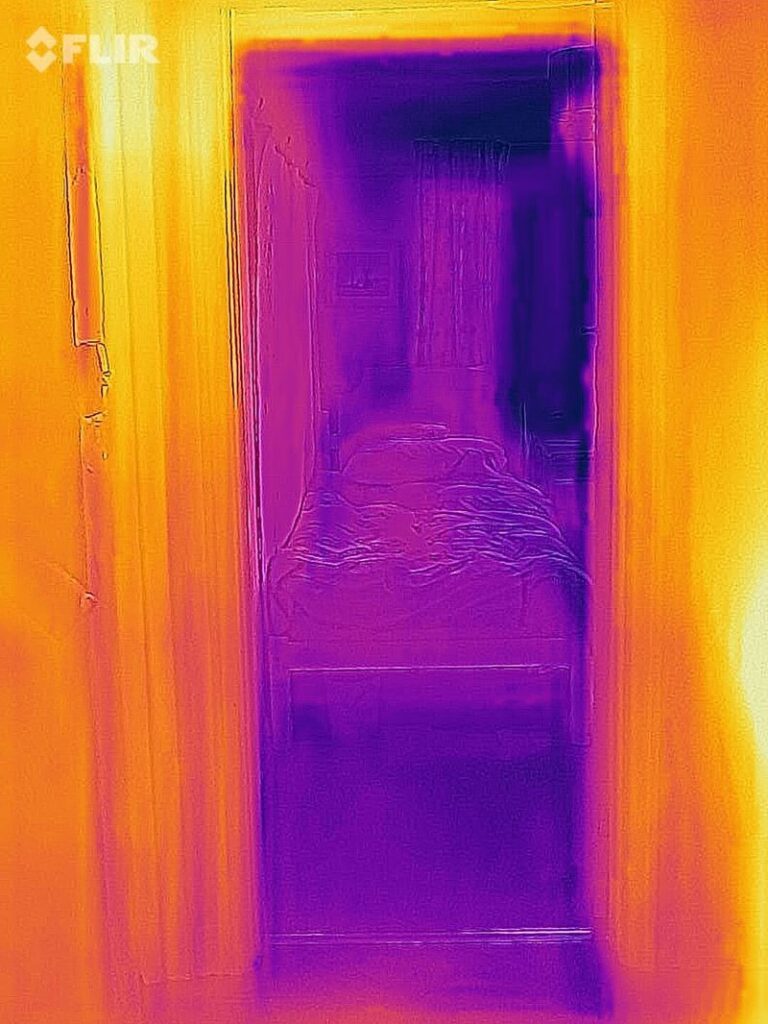
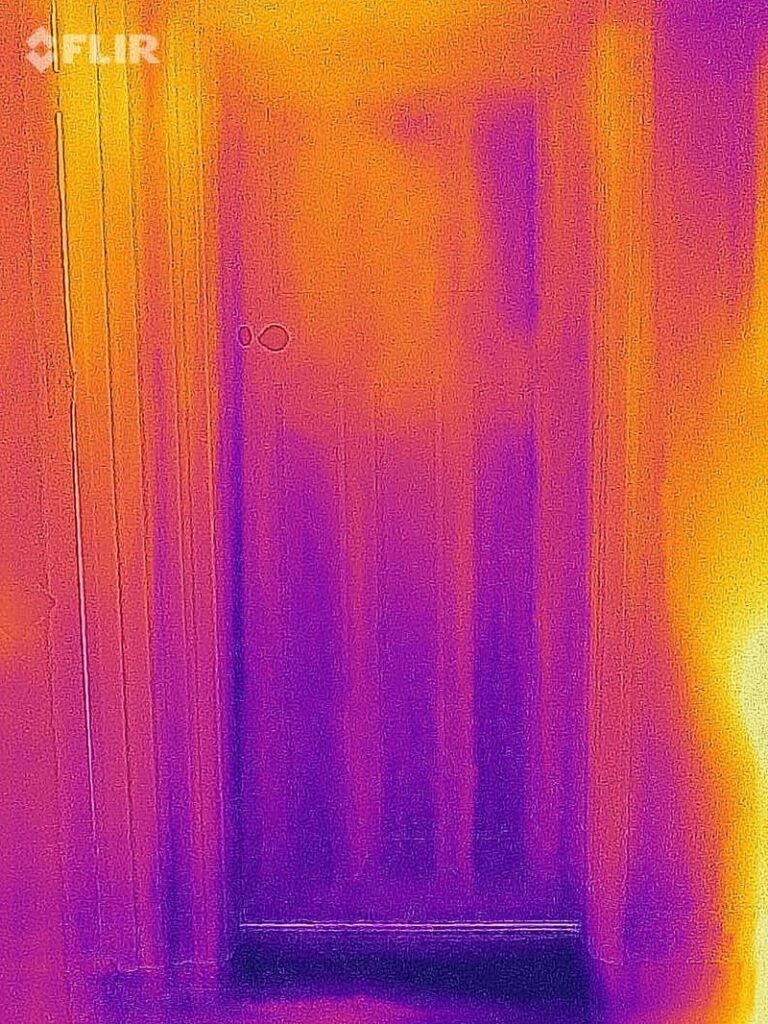
Placing draught excluders at the foot of the doors of unused rooms will also prevent cold air from entering your home.
Extractor Fans
Ensuring extractor fans are switched off when not in use prevents heat from escaping as shown in the thermal images below.
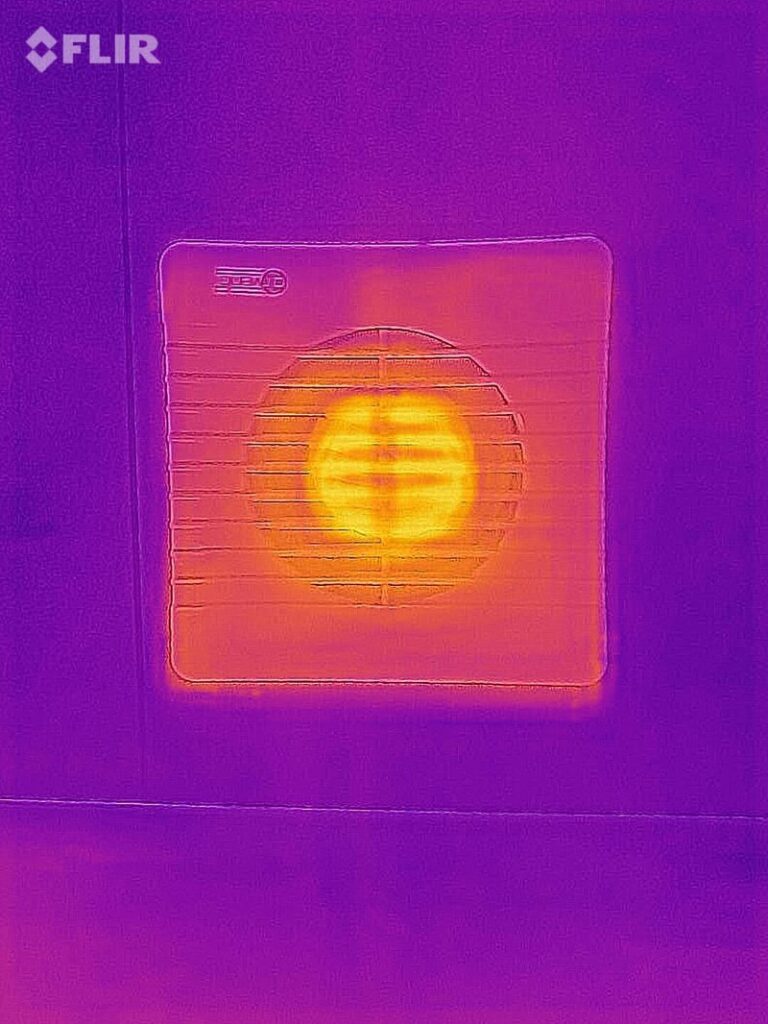
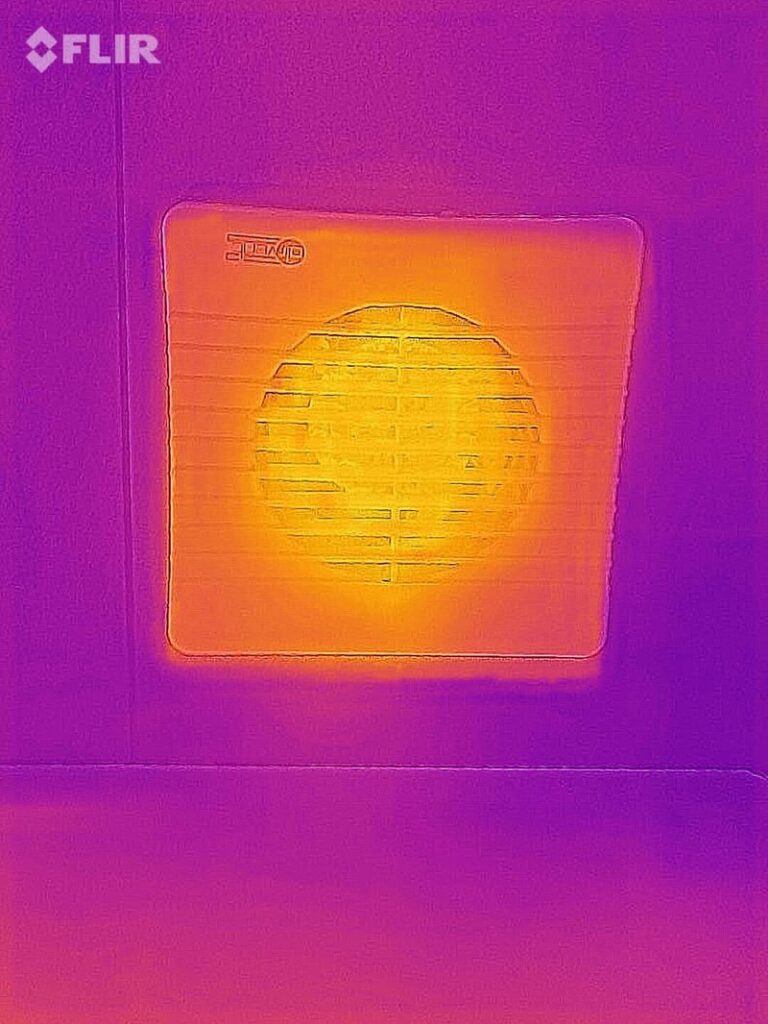
The image on the right is considerably brighter proving that more heat has been kept inside the home.
Save Money with Octopus Energy’s Budget-friendly Insulation Tips
Partnering with the YouTube channel Everything Home, Shanaka and Octopus Energy demonstrate a range of economic, easy, energy-efficient home improvements in the following video.
Octopus Energy’s Octo Assist Thermal Camera Initiative Makes Headlines
Octopus Energy’s thermal camera loan program has been so successful and had such significant financial returns for its customers that in February 2022 The Times covered it! In Jayne Dowle’s article, titled How to cut your energy bills at home using geothermal imaging cameras, two Octopus Energy customers, Rupert Gregory and Mick Wall, detailed the savings they’d made thanks to Octopus Energy’s Octo Assist Thermal Camera Initiative.
Rupert Gregory explained how he borrowed a FLIR One Pro Thermal Camera from Octopus Energy to find sources of draughts and poor insulation within his home. After investing in some simple draught-proofing and insulation solutions, his dual fuel bill decreased by 20%.[4]
Meanwhile, Mick Wall used his loaned Teledyne FLIR One Pro Thermal Camera to uncover why his front bedroom was losing heat. Cold, dark blue spots on the thermal image revealed a lack of insulation between the internal plasterboard and outside tiles beneath the bedroom’s bay window. Locating this problem meant Mick Wall could address it effectively, employing a reputable builder to fill in the gaps with insulation.[5]
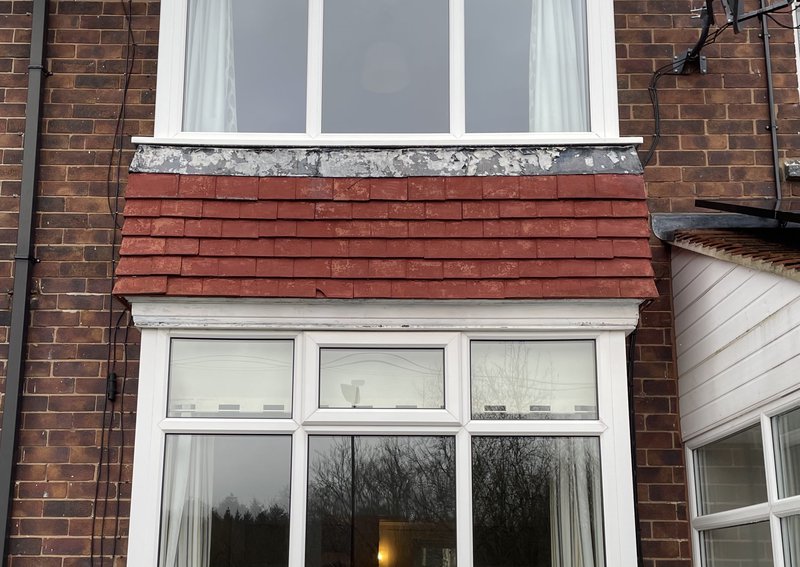
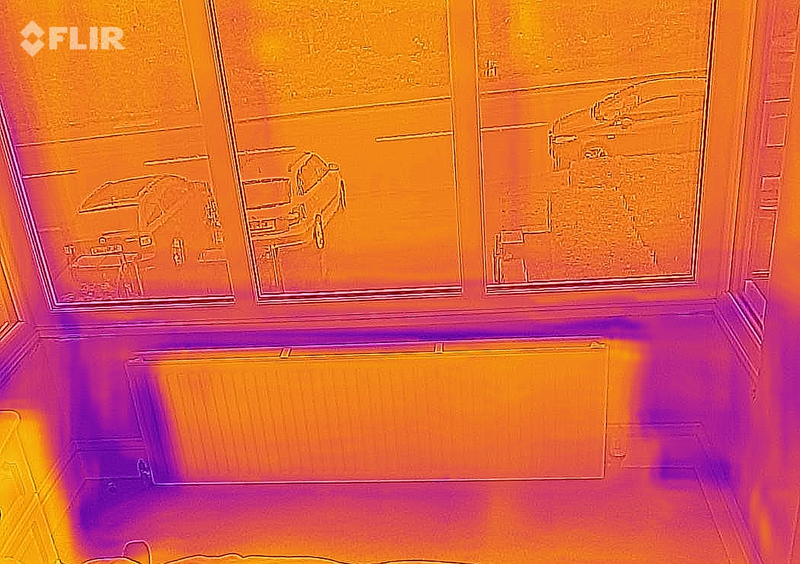
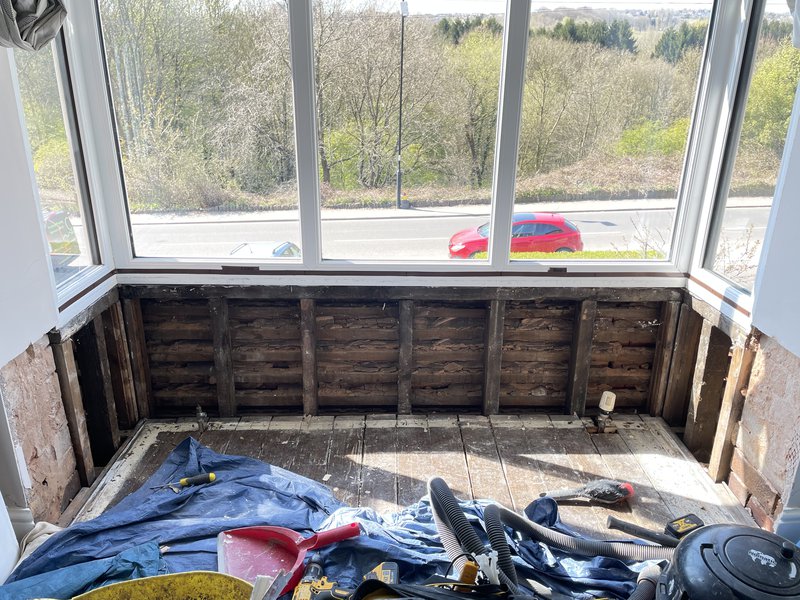
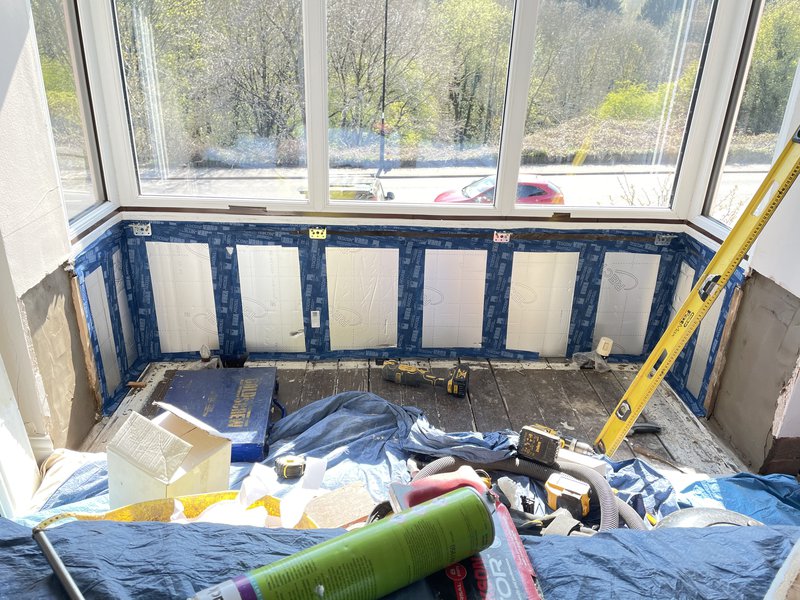
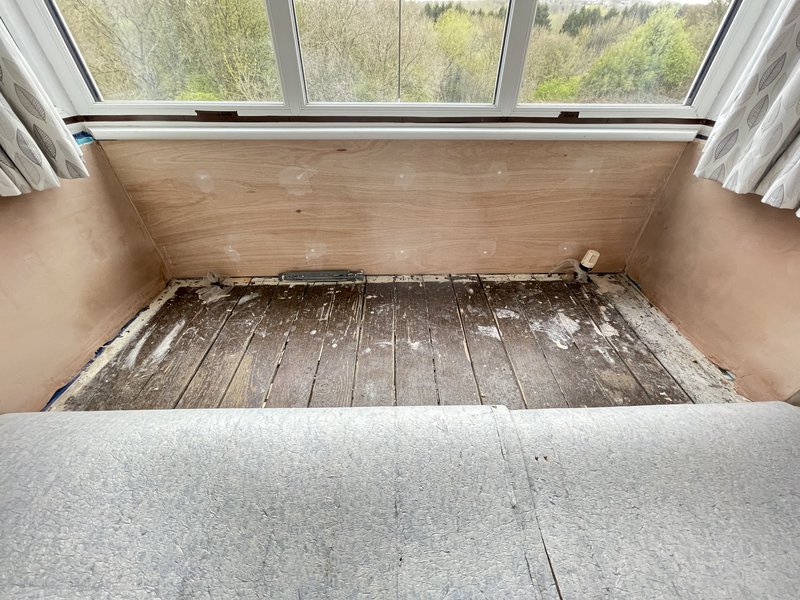
Full Coverage of These Stories Can Be Found in The Times
Happy Octopus Energy customer, Grahame, posted his own success story with before and after pictures on social media. The image on the left is of Grahame’s house without cavity wall insulation. The bright colours show that heat is radiating out into the atmosphere. This lack of insulation would have made it much harder and more expensive for Grahame to heat his home. The image on the right is of Grahame’s property with cavity wall insulation. Notice the dark blue colours of his walls; this is proof his home is now effectively trapping heat inside.[6]
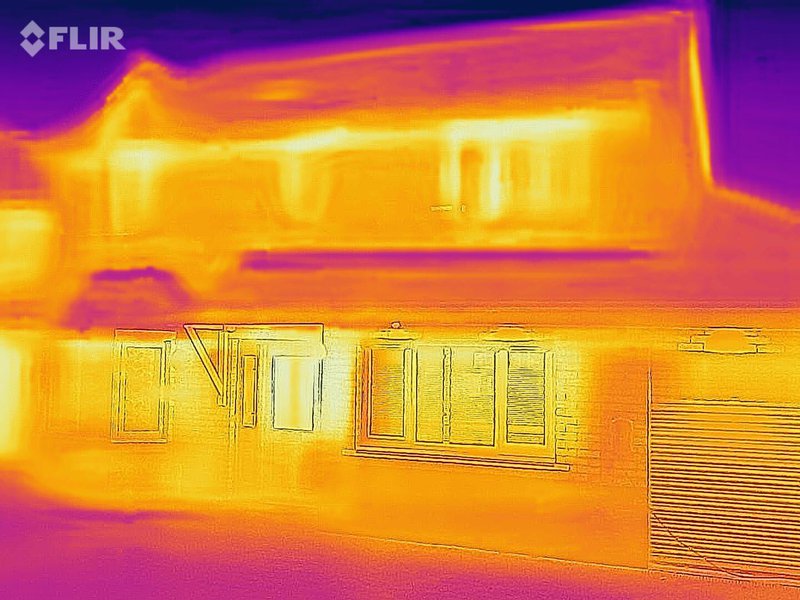
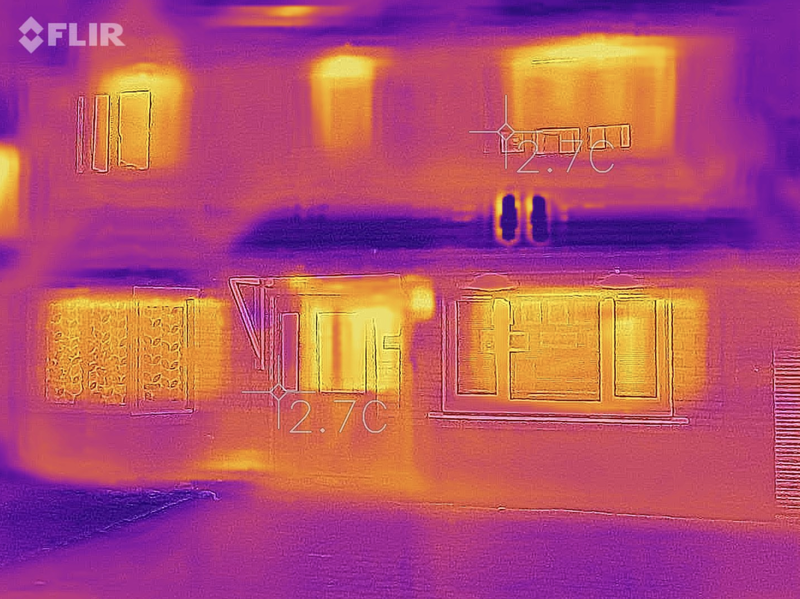
Octopus Energy advises that cavity wall insulation could reduce your heating bills by up to £160 a year![7]
View Grahame’s Twitter Post Here
For more stories about how thermal cameras are being used to save energy and lower emissions, please see our thermal news blogs below.
News Roundup: Thermal Cameras Used to Reduce Energy Bills & Carbon Footprints
Charity Uses Thermal Cameras to Reduce Property Owner’s Carbon Footprints
Introducing the Teledyne FLIR One Pro & One Edge Pro
Small, simple-to-use, and capable of capturing sharp thermal images, when it came to supplying Octopus Energy with suitable cameras for their loaning to their customers, the Teledyne FLIR One Pro and Teledyne FLIR One Edge Pro were the obvious choices.
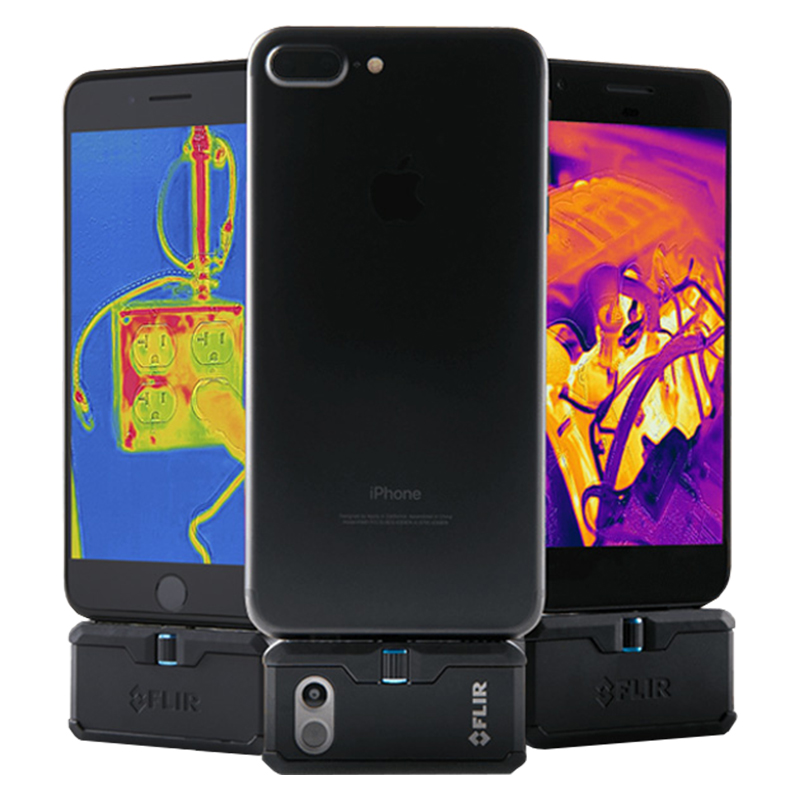
Teledyne FLIR One Pro Thermal Smartphone Module
- IR Res: 160 x 120px
- Thermal Sensitivity: 70mK
- Temp Range: up to 400°C
- MSX imaging
- iOS model
- Android model
- Plugs into your smartphone
- Battery life: 1 hour
Price: £399 (ex VAT)
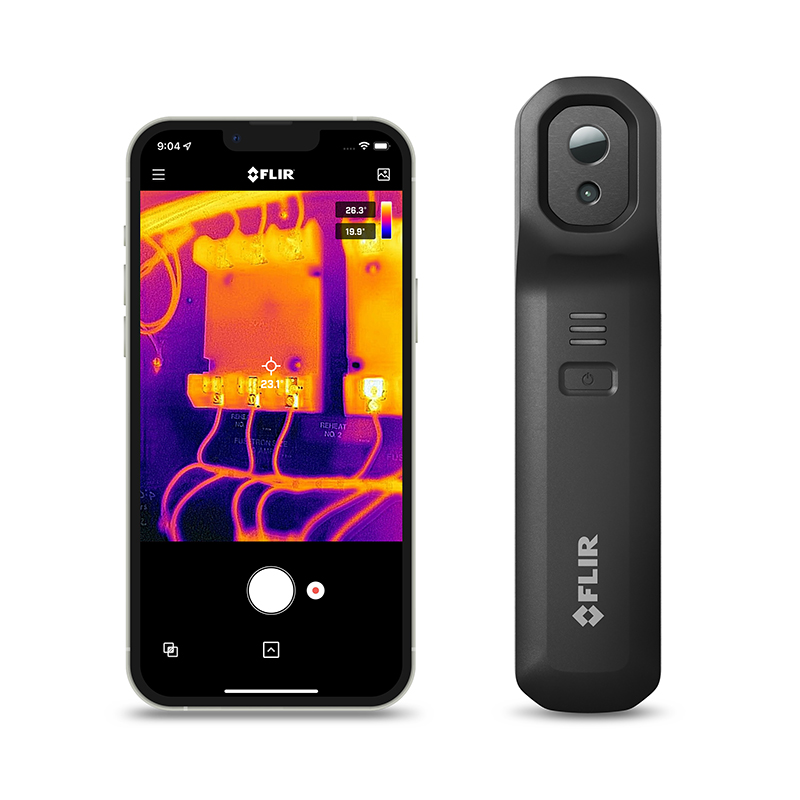
Teledyne FLIR One Edge Pro Thermal Smartphone Module
- IR Res: 160 x 120px
- Thermal Sensitivity: 70mK
- Temp Range: up to 400°C
- Accuracy: ±3°C/5%
- MSX imaging
- Supports both iOS & Android
- Clips onto your smartphone
- Battery life: 1.5 hours
Price: £479 (ex VAT)
Further Information
For further information about how thermal cameras can help reduce home and business energy bills and environmental impact, please consult the following blogs.
Winter Is Coming: Prepare Your Home for the Long Night(s) Using Teledyne FLIR Thermal Cameras
How Do Thermal Cameras Help You Save Energy on Your Bills?
How Do Green Energy Suppliers Reap Benefits from Thermal Camera Imaging
PASS Provides FLIR Thermal Camera for Poultry Farmer's Enlightening Barn Ventilation Report
If you require more help or advice regarding any of our energy auditing thermal cameras, including the Teledyne FLIR One Pro and Teledyne FLIR One Edge Pro, please don’t hesitate to contact our Sales team on 01642 931 329 or via our online form.
Browse All Our Energy Auditing Thermal Cameras
Shop the Teledyne FLIR One Pro Thermal Camera Smartphone Attachment
Buy the Teledyne FLIR One Edge Pro Thermal Camera Smartphone Attachment
[1] Grace Gausden, ‘Are you in energy debt? As one fuel provider offers households with high usage a thermal camera to see where they lose heat, we test it out’, This is Money, last accessed 20 January 2023
[2] Octopus Energy, Spot heat loss around your home with one of our FLIR thermal imaging cameras, last accessed 20 January 2023
[3] Octopus Energy, Spot heat loss around your home with one of our FLIR thermal imaging cameras
[4] Jayne Dowle, ‘How to cut your energy bills at home using geothermal imaging cameras’, The Times, last accessed 16 February 2022
[5] Jayne Dowle, ‘How to cut your energy bills at home using geothermal imaging cameras’
[6] Octopus Energy, Spot heat loss around your home with one of our FLIR thermal imaging cameras
[7] Octopus Energy, Spot heat loss around your home with one of our FLIR thermal imaging cameras




